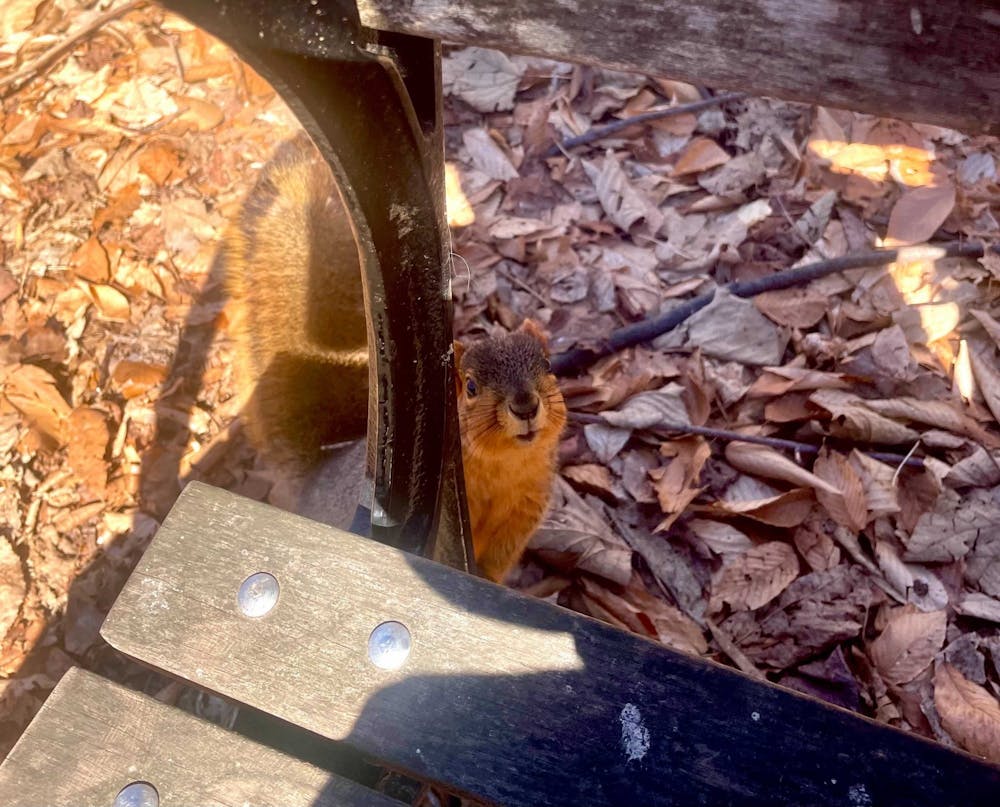If you’ve seen “Monty Python and the Holy Grail,” you know that the little, black bunny titled the “killer bunny” is all bite, with little bark as a warning. Its death count may be the same as historical action movie figure James Bond. This is a fictional danger, but to people like one of my best friends, it could highlight truths. One of her biggest fears is that squirrels will jump down from trees attacking humans at the jugular. It hasn’t happened yet, but how dangerous could these little critters be?
These stories – fictional and nonfictional – beg the question, are there certain animals we should keep a distance from, or is it okay to feed them? After all, they are a part of wildlife and have a risk of being desensitized around humans if we feed them too much. This can lead them to partake in violent actions, actions that have nothing to do with them, but everything to do with those that feed them.
The black “killer bunny” may not be a far cry from real life scenarios. In Buckley, New Whales, a squirrel named “Stripe,” after the evil character from “The Gremlins,” was reported to have attacked 18 residents in the span of 48 hours. The squirrel, sadly, had to be put down due to its risk of harming more people.
[Related: Wildlife to look for in Monroe County]
These rampant actions of Stripe could have been due to tumors or growth affecting the brain. but the squirrel was also found to have been fed by an elderly resident of the neighborhood. Similar violent actions can be carried out by squirrels because they have been fed and conditioned to rely on food from people.
As I walk around campus, I am often stopped by curious squirrels. There was one instance where I was sitting in Dunn Meadows on a phone call, and a squirrel came inches away from me. I had been working on this article before this moment and was worried I would have a “Stripe moment” with the squirrel pouncing on my face.
I am not the only one who has been approached by a Hoosier squirrel. Oftentimes, I’ll see various people feeding the squirrels, normally with the little creature taking it right out of the persons hand.
So, upon this observation, I realized that it wasn’t because I seemed like a nice, gentle soul that these squirrels came up to me. Rather, they thought I had food.
Not only can feeding squirrels make them dependent on humans, it can also cause inflated populations. When a feeder is set up in someone’s backyard, word gets around and eventually you may have the whole neighborhood of squirrels outside your window. It’s cute and seems harmless;, however, what happens if you stop feeding them?
[Related: Lack of squirrels, wildlife on campus may be part of natural cycle]
Without easy access to a food supply that allowed for the rapid increase in their population, they begin to go back to foraging for food. Now, though, there are way more squirrels than before. So there is a shortage of vegetation for the new amount of squirrels in the neighborhood. Because of this, the vegetation within the neighborhood can suffer.
On campus, if humans begin feeding food and then all of a sudden stop, squirrels may not be able to forage enough food for itself because it’s become so dependent on finding food from us.
Overall, we have to stop feeding squirrels so that they don’t rely on us and risk becoming dangerous, possibly resulting in them being put down. Admiring them and saying hi to them is okay, however, refraining from feeding them is best for their livelihood and ours.
Carolyn Marshall is a sophomore majoring in media studies with a focus in TV, digital and film production and minoring in English.






